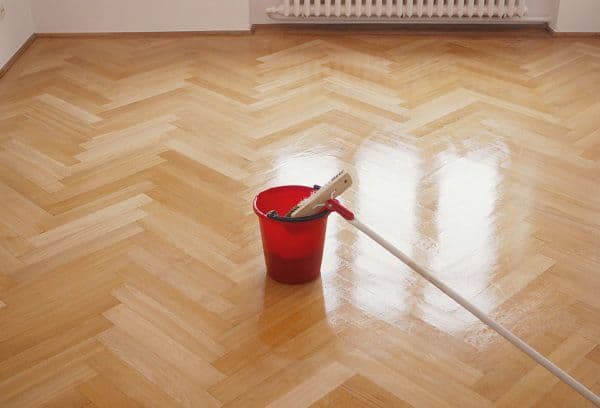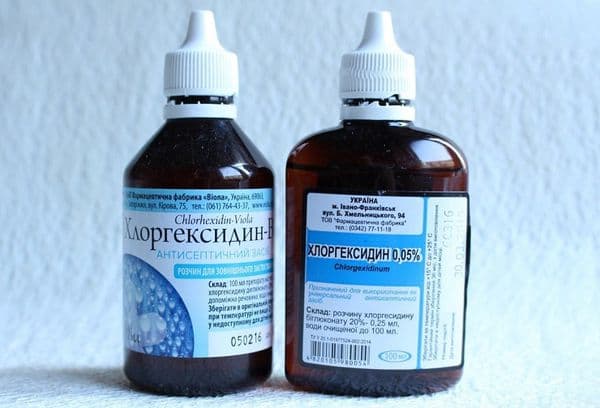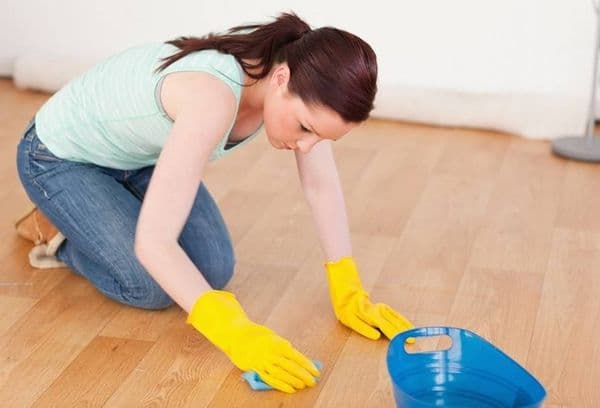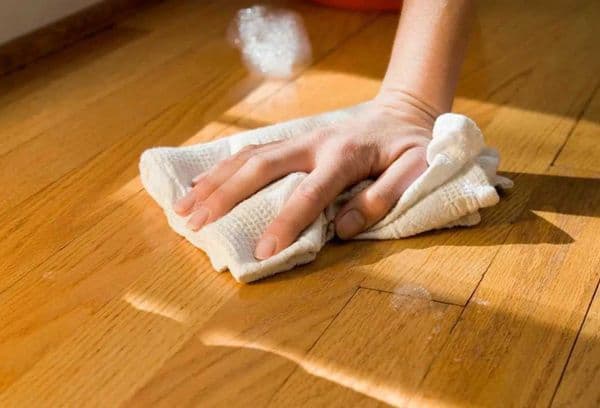Is it possible to wash linoleum with bleach? A few simple tricks
Now there are so many cleaning products on store shelves that, willy-nilly, you want to use something simple and clear. And bleach seems like it, but is it possible to wash linoleum with bleach? Not unless you're concerned about the color and shine of your flooring. It is better to use less aggressive detergents. There are safe ways to remove stubborn stains and disinfect linoleum.
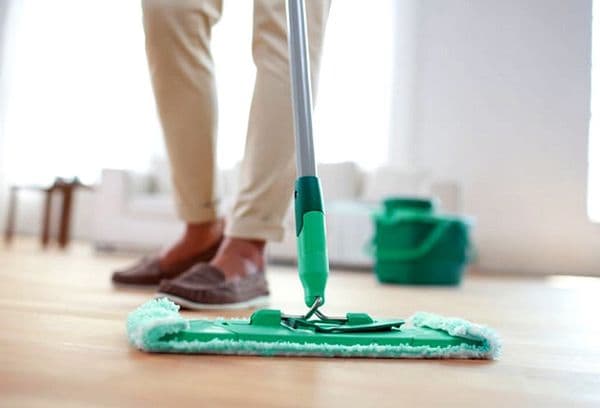
Why shouldn't you use bleach to clean linoleum?
Bleach and bleach based on it “Whiteness” react aggressively with the surface, attacking the protective film of linoleum along with dirt and bacteria. Even the thickest protective layer on office flooring will not cope with such an impact, it will become cloudy, thinner, and get dirty faster. In addition, bleach has a pungent and persistent odor and remains on the surface for a long time.
The only type in which you can wash floors with bleach is a very weak solution, with a subtle smell of chlorine. But this is recommended only as an emergency procedure, for example, before an imminent visit of guests, when there is no time to run to the store for a good detergent.
What to replace the bleach solution with? And how to wash linoleum so as to achieve a beautiful and clean surface?
Alternative remedies
Linoleum is perhaps the most versatile and easy-to-use floor covering. It is easier to remove dirt from it, and it tolerates an abundance of water during cleaning much more easily than parquet or laminate.And water is one of the best solvents, if you start cleaning it right away, not allowing a random stain to dry out or stick. Even cat urine can be washed off linoleum without any residue if you immediately blot it with a paper napkin, not allowing it to be absorbed, and wash it with regular floor liquid.
Microfiber cloths will enhance the effect of gentle products. This material instantly and without streaks washes away almost any dirt.
Soap, washing gel, a solution of washing powder, a weak solution of table vinegar or ammonia are good for washing away various contaminants. Vinegar, among other things, kills pathogens - so it is a completely safe and effective alternative to bleach. Cheap Chlorhexidine will cope with disinfection just as well.
Magazine advice purity-en.htgetrid.com
An excellent stain remover is laundry or toilet soap. However, it leaves a film behind and the floors look dull and get dirty faster, so the product must be thoroughly rinsed off with water and is best used only for removing stains, and not for general cleaning.
To add shine, you can polish the linoleum with mastic or a solution of milk and water (1:1). A solution of potato broth or starch works no worse.
Difficult spots
Rubber shoes (shoes with black soles) often leave streaks on the linoleum that are extremely difficult to clean. The antidote is familiar to many from school: a soft, diligent rubber band. She needs to work without effort, the stains come off quickly.
Tennis balls act similarly to an eraser - many housewives have a couple for washing down jackets and children's blankets. The material of the sports equipment will make it easy to remove black strokes without damaging the protective layer on the linoleum.
If you need to remove a glue stain, use nail polish remover without acetone. However, do not pour the product directly onto the stain—moisten the cloth and gently, without force, blot the stain several times until it “softens.” Then remove it with a cotton pad or napkin with clean water.
Advice
The method is suitable for any household glue. It is better to wash various construction adhesives with special products, which are often produced by the manufacturer along with the glue.
Dishwashing detergent or a weak (!) vinegar solution will help with whitewashing. A vinegar solution left on the stain for a few minutes will also work against the primer.
The magazine purity-en.htgetrid.com does not recommend combining different stain removers: the resulting mixture can have an unpredictable effect on the surface and damage it. If one product does not help, you should rinse it thoroughly (ideally, wipe it dry afterwards) and only then try another substance.
A few tricks to keep linoleum looking presentable longer:
- When dealing with an old stain or washing floors by hand, wear rubber gloves: they will not only protect your skin and manicure, but will also prevent you from accidentally scratching the linoleum with your fingernail;
- use warm (about 35-45 °C) water - at this temperature, detergents and dirt dissolve better, and at the same time it is not dangerous for linoleum and is pleasant to the hands;
- avoid products with insoluble particles, including soda - when washing, the crystals will scratch the surface of the linoleum;
- Before you start wet cleaning, remove small debris, sand and wool with a brush, broom or vacuum cleaner.
Linoleum is a very practical and most affordable floor covering.It is easy to clean, can be restored after an accidental flood, and is not afraid of dry air. But it is very soft and vulnerable to aggressive detergents and mechanical damage. Use only gentle compounds without hard granules, and your floor will delight you with its beautiful appearance for a long time.
